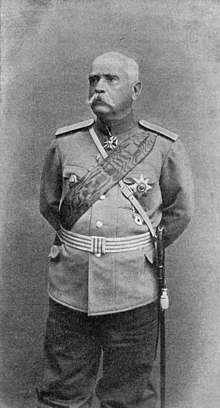Andrei_N._Selivanov
Andrey Nikolayevich Selivanov (5 August 1847 – 15 July 1917) was a Russian politician and general notable for capturing Przemyśl during World War I.
This article includes a list of references, related reading, or external links, but its sources remain unclear because it lacks inline citations. (January 2012) |
